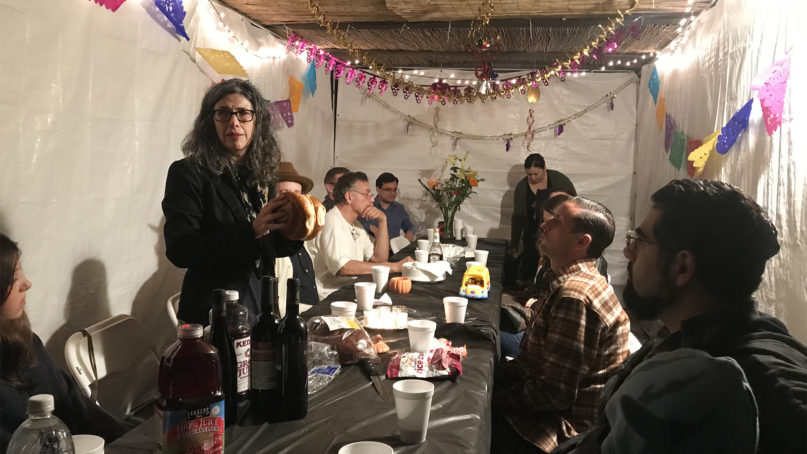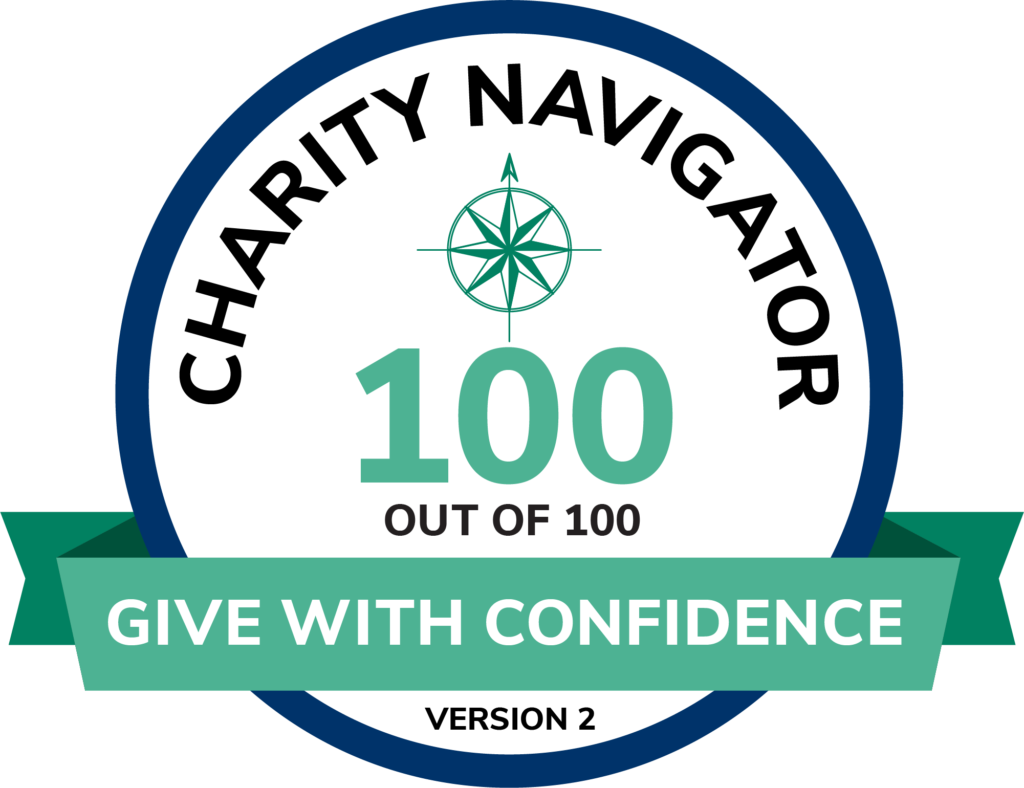LOS ANGELES (RNS) — Corinne Mosh celebrated the first night of the Jewish holiday of Sukkot like never before.
She feasted in a space embellished with decorative Mexican papel picado, alongside a Chicano vocalist singing folk music in Spanish and a Jewish and Mexican-American spiritual leader who casually switched between Spanish, English and Hebrew.
“To me, it speaks to the diaspora of Jewish people all over the world,” said Mosh, 43.
Mosh and about 15 others gathered Sunday (Oct. 13) in Boyle Heights — a working-class Latino neighborhood on the east side of Los Angeles that was once a thriving Jewish enclave — to observe the biblical holiday of Sukkot. This tradition celebrates the harvest and recalls the Israelites’ 40-year journey in the desert after they fled Egypt.
During Sukkot, which began Sunday and ends Oct. 20, observant Jews spend time in a sukkah — a temporary outdoor hut that signals the Israelites’ dwellings before they reached the Promised Land. These structures are made out of thatch or branches that can provide shade and protection from the sun.
Mosh and others held their celebration in what is believed to be the first sukkah in Boyle Heights — a community with a strong Chicano and Mexican identity — in more than 30 years.
Shmuel Gonzales, a Mexican American and Jewish community historian, helped organize the Sunday feast inside the sukkah. Shiny wreaths in violet, gold and red colors hung from side to side. Banners of traditional Mexican tissue paper decorated the shelter’s white walls. Stuffed eggplant, chili peppers filled with meat and dried fruit, and squash stuffed with tomato and tamarind sauce were served for dinner. To keep with tradition, Gonzales shook the “lulav” — a palm branch bundled with myrtle and willow branches — and a yellow citrus fruit called an “etrog.”
The lulav and etrog are waved to represent “God’s presence in all directions.”
https://www.instagram.com/p/B3qT_icAUTA/
“We’re here making history,” Gonzales said on Sunday.
Gonzales, 42, said the tradition of celebrating Sukkot in Boyle Heights faded after the 1987 Whittier Narrows earthquake damaged the Breed Street Shul, the last of the Eastside synagogues that stayed open in the decades following the population shifts of the postwar era. Vandalism and neglect contributed to the final services being held in 1996.
“I decided a while ago that (if) we were going to have the Jewish faith alive in the Eastside no one was going to do it for us,” Gonzales said.
For Gonzales, preserving remnants of the Jewish faith in the Eastside is personal. His family has roots in Boyle Heights dating back to 1896. He said the Jewish community has embraced him as a convert. It’s estimated that about 227,000 Latino adults in the United States identify their religion as Jewish, according to a 2019 report released by the American Jewish Population Project.
About 40% of Boyle Heights’ population was Jewish through the 1920s and ’30s, according to the Los Angeles Conservancy. While more upwardly mobile Jews established themselves in Hollywood and the Westside before World War II, the Jewish community in Boyle Heights was made up of mostly working-class families from Eastern Europe. They were mainly secular and politically engaged in the Eastside.
Gonzales held the sukkah gathering outside a community space that hosts comedy nights and is the home of Boyle Heights History Tours. As part of these tours, Gonzales takes people on urban hikes and walks to explore the area’s Jewish history as well as some of the lost cemeteries of Los Angeles. The money made through that work helped pay for the Sukkot festivities, he said.
Sukkot is “one of these ancient holidays that has been revived in so many different ways for us to find relevance with it,” Gonzales said.
He tied the holiday to the homeless crisis in Los Angeles that has left more than 36,000 in the city without a home. He recalled seeing homeless people under palm branches seeking relief from the heat. “These are homeless people that need shelter,” he said.
He also thought of the immigration crisis along the southern border and of the “refugees wandering through the desert in hopes of getting to the Promised Land here.”
Sukkot, Gonzales said, is “not just to celebrate how far we’ve come … but also to keep in mind all of those who are still on that journey looking for their shelter.”
Gonzales also likened the sukkah to a Día de los Muertos altar, a sacred space where people honor their ancestors.
“With a sukkah, it also becomes a mystical space in which we are able to connect with our ancestors,” he said.
This is the kind of multiculturalism that attracts Martín Olvera, who is Chicano with roots in Boyle Heights. Olvera’s father was born in Boyle Heights and learned woodcrafting from a Jewish man. His grandmother arrived in Boyle Heights as an immigrant from Mexico in 1910. His New Mexican mother also made L.A. her home.
Olvera, a musician who was raised Catholic, said he values the Jewish community for standing up for immigrant rights.
Sunday was his first Sukkot, where he sang and played the violin.
“I thought it was really empowering,” said Olvera, 63.
Matthew Hom of Bend the Arc — a Jewish, nonprofit working for social justice — also attended Sukkot in Boyle Heights. He normally commemorates the holiday by going to services at his synagogue and having a meal in the sukkah, but this time it felt different.
Hom’s grandfather was raised in Boyle Heights, and celebrating Sukkot there was special “because it allowed me to connect to my family’s history here.” He said he’s inspired by the history of the community because of the “social justice work and solidarity between Jewish and Latinx residents.”
Hom, 32, said Sukkot is a way for Jews to remember their history of migration and insecurity.
“It’s precisely why we commemorate this narrative that we feel compelled to redouble our effort to secure immigrant justice today,” Hom said.
For Mosh, Sukkot in Boyle Heights was a learning experience. She’s not originally from L.A. and was unaware of the Jewish history of the community.
Although she grew up going to synagogue, Mosh said she is not particularly religious. She remembers going to Sunday school and decorating the sukkah and wanted her kids to experience the tradition. Mosh said she appreciated commemorating the holiday through a social justice perspective, considering the housing and immigration crisis.
“It felt refreshing and familiar,” she said. “That’s the Judaism I remember and was needing in my life.”





